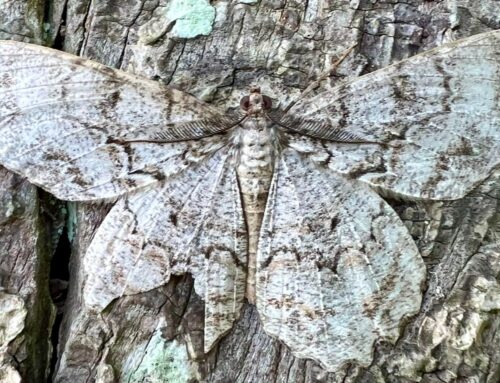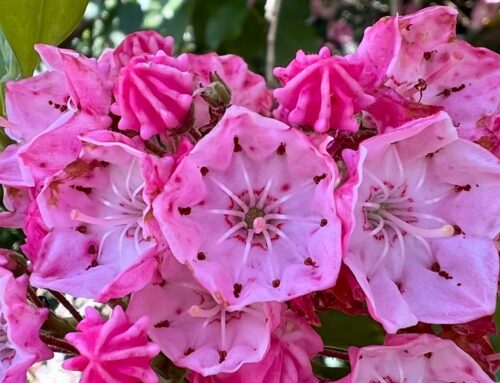The former Tyler Bulletins (1958 through the 1980’s) occasionally featured articles on specific trees within the Arboretum. Below is a reprint of the January 1976 entry titled “The Kentucky Coffee Tree”, written by Charlotte S. Shaefer. In order to visualize some of the features described by Ms. Shaefer, we have also produced a short video taken in late May, 2020 from the location of both the male Kentucky coffee tree located by the Crooked Goblin House, and the female tree, which is below the barn.
Please enjoy this article from 44 years ago, and the next time you are able to visit Tyler’s two Kentucky coffee trees, take a closer look at their unusual features.
THE KENTUCKY COFFEE TREE
By Charlotte S. Shaefer
When you really get into the Arboretum through the pines and hemlocks after the parking lot, the dominant tree you see to the left near Stone House is our magnificent Kentucky Coffee-tree (Gymnocladus dioica), shown on the cover in winter dress. It is a classic example of the observation that the branches and twigs of a tree show a close relationship to the size of the leaves – the larger the leaves, the heavier the branches and twigs. The Coffee-tree bears doubly-compounded leaves from one to three feet long and sometimes two feet wide. It certainly needs its stout naked branches (Gymnocladus from the Greek means “naked branches”) and its heavy twigs shown on the opposite page. These branches are still conspicuous features in the summertime because the foliage is not dense enough to conceal them. The tree leafs out late in the spring, then yellows and drops its foliage early in the fall. The twigs are commonly covered with a whitish flaking film.
The other half of the name, dioica, refers to the fact that each tree has flowers of one sex only, though occasionally this is not true. Flowers are greenish white and born in June on panicles two to eight inches long. Conspicuous thick, flat, broadly oblong brownish-purple pods containing large, hard, blackish seeds follow and hang on all winter. We have no pods for our tree is a male. However, there is a very young female planted below the Barn which is holding a few pods. Trees can grow to 120 feet.
We are not certain of the record of this tree. In their Lawn Book, Jacob and Minshall Painter record planting a male and a female tree in 1854. Conard found Coffee-trees in 1898, and they are recorded again in 1946 and 1955. There is no record of any purchase since the first. However, seeds will grow though they germinate slowly and require full open sun in a rich bottom land to develop. The tree grows as isolated specimens rather than as a dominant member of a plant community as do beech and the oaks. Its natural habitat is west of the Appalachians and in the Great Plains region. It is called a survivor of the great Ice Age for it is found in isolated pockets untouched by the glaciers. The Agriculture Department considers this tree remarkably free of disease, second to the ginkgo. Though a legume, the tree does not have nitrogen-fixing bacterial root nodules capable of fixing nitrogen in the soil. Wood is durable in contact with the soil and takes a good polish. Its use is local for fence posts and poles. Trees are used for shelter belts.
The common name stems from the fact that earlier settlers into Kentucky learned from the Indians to use the seeds as food. Settlers made a beverage resembling coffee in color, but not in flavor, from the seeds.






